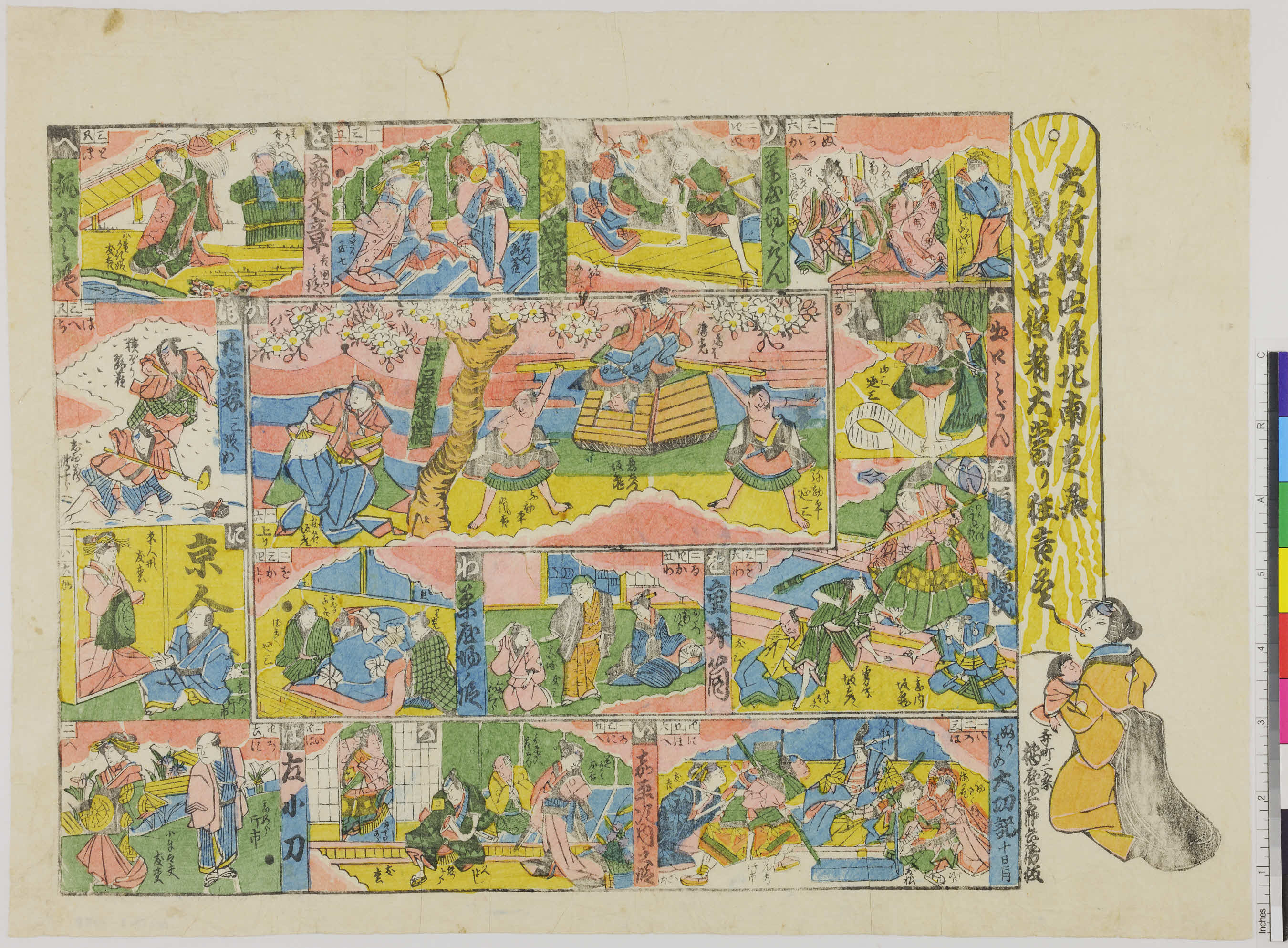G08 Shibai Backgammon
-
"Osaka-ban Shijo Kita Minami shibai Kaomise yakusha oatari kyogenzukushi"
Artist: 無款 判型:大々判/合羽摺絵
Performance: November 1859(Ansei 6) Kita-za and Minami-za, Kyoto
Ritsumeikan Art Research Center (arcSP02-0258)
Sugoroku, one of the Japanese board games, has such a long history, and we can see its description even in Nihon shoki. Also in Shousouin, Sugoroku from Korea is stored. The very first Sugoroku with picture Buppo sugoroku had been used around 13c. In Edo period, because of the development in printing technology, technique of Nishikie was added, and Sugoroku became more gorgeous and colorful.
There are generally three kinds of Sugoroku. Mawari sugoroku is a normal one, just starts from the first and advance a piece to the goal. In Tobi Sugoroku, depending on spots of a dice, a piece jumps around the board squares. Tobimawari sugoroku is these mixed version.
By Ukiyoe artists who paint Yakusha-e, many Sugoroku themed on Kabuki were created as well. Various pictures were painted in each square, and usually for Kabuki Sugoroku, its programs were painted in performing order. Other than this, there are also sugoroku that various stage properties and actors were painted, or describes backstage. Kabuki Sugoroku made in Kyoho period is known as the oldest sugoroku today.
In Kyoto, from Kansei period, Tobimawari sugoroku colored by Kappazuri, was sold during Kaomise Ko-gyo. This Kyoto Kabuki sugoroku was quite simple and has fewer squares, so rather produced for Sugoroku collectors than as a game.
-

- 投稿日:
- by 8P
- カテゴリ: G Amusement for Audiences
- [編集]